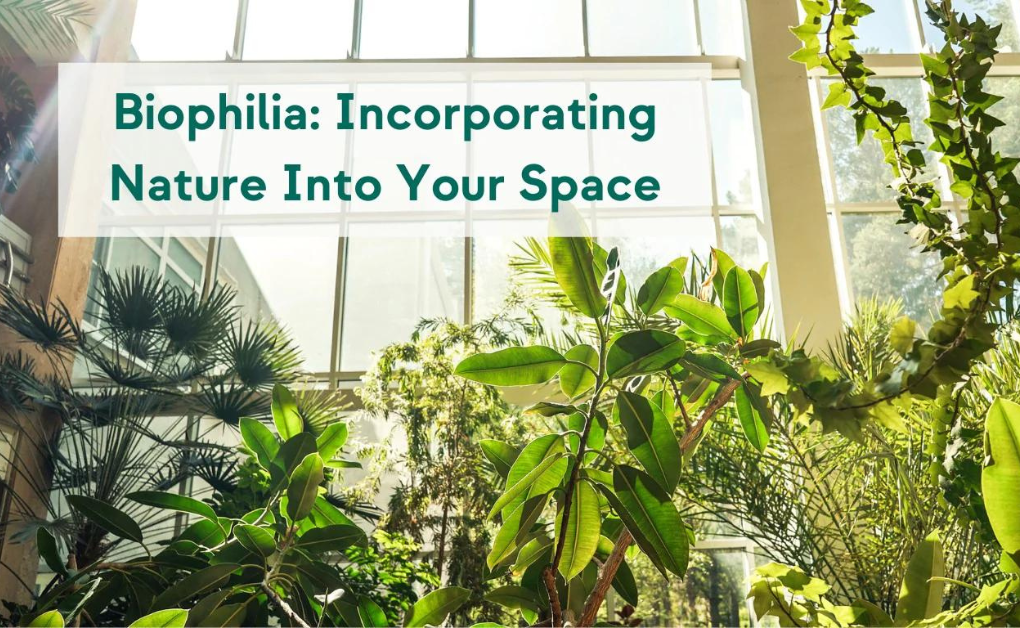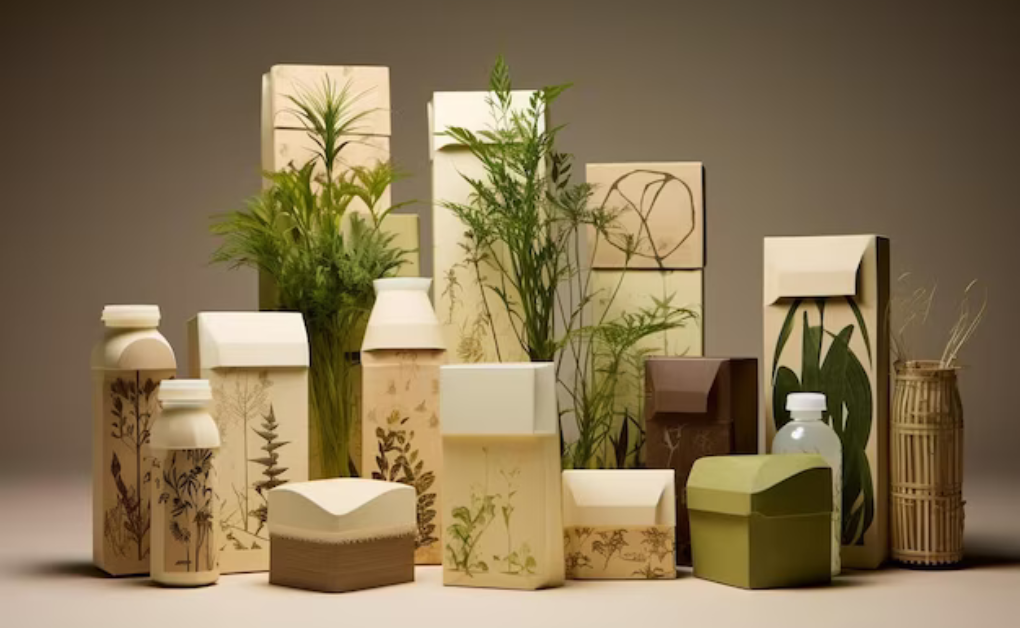Exploring Biophilic Design: Connecting Spaces with Nature
In the concrete jungles of modern urban living, the longing for nature’s embrace remains a constant. Enter biophilic design, a concept that bridges the gap between built environments and the natural world, offering a harmonious coexistence that nurtures both the human spirit and the surrounding ecosystem. In this blog post “Exploring Biophilic Design: Connecting Spaces with Nature”, we embark on a journey to explore biophilic design, its profound impact on well-being, and its creative influence across diverse design disciplines.

Unveiling Biophilic Design: A Symphony of Nature and Structure
Biophilic design is more than just a trend; it’s a philosophy that recognizes our inherent connection to nature and seeks to infuse natural elements into our built surroundings. From interior spaces to architectural marvels, biophilic design is all about weaving the textures, patterns, and rhythms of the natural world into the fabric of our daily lives.
The Benefits of Biophilic Design on Human Well-Being
Stress Reduction: Natural elements, such as plants and flowing water, have a soothing effect on our nervous system. Biophilic design can reduce stress, anxiety, and mental fatigue, creating environments that promote relaxation and healing.
Enhanced Creativity: Exposure to nature fosters creativity. Incorporating natural patterns and materials into design spaces can inspire innovation and encourage fresh perspectives.
Improved Air Quality: Plants play a crucial role in purifying indoor air by absorbing pollutants and releasing oxygen. Biophilic design improves indoor air quality, contributing to better respiratory health.
Increased Productivity: Biophilic elements have been shown to enhance focus and productivity. Incorporating nature into workspaces can lead to improved concentration and a higher quality of work.
Better Well-Being: Biophilic design has a positive impact on overall well-being. It has been associated with improved mood, reduced blood pressure, and faster recovery times in healthcare settings.
Biophilic Design in Various Disciplines
Interior Design: Introducing living walls, indoor gardens, and natural materials like wood and stone into interior spaces can create a sense of tranquility and connection with nature.
Architecture: The outdoor is brought indoors, which results in a blurred distinction between the constructed environment and the natural world by architectural designs like big window with view on nature, outdoor terrace and courts.
Urban Planning: The Principles of Biophilia can be considered for any design aspects for urban planning including parks, green space, and walkable communities with an agenda centred on human welfare and ecological resilience.
Product Design: From furniture made with natural materials to home decor inspired by organic shapes, biophilic design principles infuse products with a touch of nature.
Healthcare Design: Hospitals and healthcare facilities are adopting biophilic design to create healing environments that aid patient recovery and reduce stress for both patients and staff.
Creating Biophilic Spaces: Tips for Designers
Natural Light: Maximize natural light exposure in design spaces. Sunlight not only illuminates but also connects us to the rhythms of the natural world.
Living Elements: Integrate living plants, water features, and natural textures into the design. Living walls, indoor plants, and water installations can enhance the sense of tranquility.
Nature-Inspired Patterns: Incorporate patterns inspired by nature, such as leaf motifs or flowing water, in textiles, wallpapers, and other design elements.
Material Selection: Choose sustainable and natural materials like wood, stone, and bamboo to create a tactile connection with the environment.
Harmonizing with Nature, Inspiring Creativity
Exploring Biophilic Design: Connecting Spaces with Nature: Biophilic design transcends aesthetics; it’s a movement that taps into our primal connection with nature, shaping spaces that nurture our well-being and awaken our creative spirit. Biophilic Design brings nature, whether urban or rural, back to the built environment, allowing us thrive. Designers, we get an opportunity to create spaces that acknowledge this linkage in respect to beauty and wisdom of our surrounding word or world.








